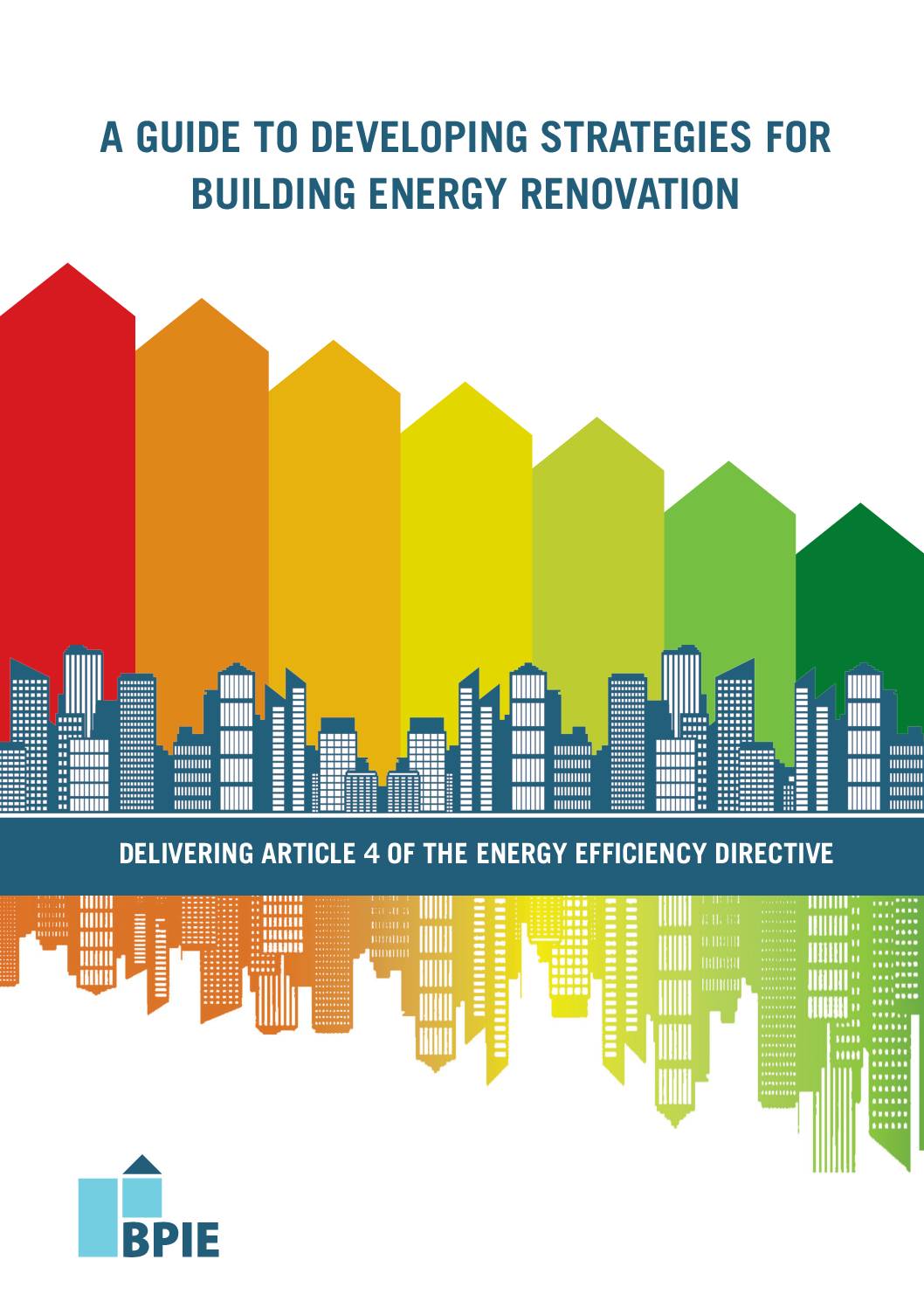Buildings represent the largest untapped source of cost effective energy saving and CO2 reduction potential within Europe, yet the sector continues to suffer from significant underinvestment. It is therefore timely that the Energy Efficiency Directive (EED, 2012/27/EU) adopted in October 2012 includes a requirement for Member States to develop long term renovation strategies for their national building stocks.
EED replaces two previous directives on energy services and cogeneration. It seeks to promote energy efficiency across the European Union and was developed in order to help deliver the EU’s 20% headline target on energy efficiency by 2020, as well as to pave the way for further improvements thereafter. EED contains a number of measures designed to deliver energy savings across all sectors, from overall national energy efficiency targets to the setting of energy efficiency obligations on energy companies.
Alongside EED, the Energy Performance of Buildings Directive (EPBD, 2010/31/EU), recast in 2010, sets out numerous requirements including energy performance certification of buildings, inspection regimes for boilers and air conditioning plants, and requirements for new buildings to be nearly zero energy. EPBD sets minimum energy performance standards for buildings undergoing renovation.
Together, EED and EPBD provide a framework for Member States to drive the reduction of energy use in buildings, thereby delivering a range of economic, environmental, societal and energy security benefits. This paper focuses on one of the most significant elements of the EED targeting the building sector, namely Article 4 on Building Renovation, which requires that Member States:
“establish a long-term strategy for mobilising investment in the renovation of the national stock of residential and commercial buildings, both public and private.”
Such a renovation strategy supports and reinforces many of the requirements set out in EED and EPBD, as demonstrated in Part 2.
BPIE has prepared this Guide in order to assist Member States in the process of developing their renovation strategies and in particular the first versions which are to be published by 30th April 2014. This Guide is structured as follows:
In Part 1, we set out the multiple benefits that arise from improving the energy performance of buildings and highlight the existence of numerous challenges and barriers to the achievement of the potential benefits. In light of the wide ranging benefits, and given the significant challenges facing sustainable energy investments, we then argue the case for Member States to be visionary in setting out a long term strategy for building stock renovation;
In Part 2, we describe the strategy development process in detail, including a description of the 5 key phases and a suggested list of actions Member States could take to underpin the strategy;
Concluding remarks reiterate the key objectives of a renovation strategy;
Annex 1 sets out the specific requirements contained in Article 4 of the Energy Efficiency Directive;
Annex 2 sets out the key steps and information requirements for undertaking the technical and economic appraisal of the renovation potential in the building stock;
Reference material is provided in Annex 3.
Share this

Sectors: Buildings, Cross cutting, Equipment and appliances, Finance, Industry, Power sector, Renewables
Country / Region: Europe
Tags: building types, energy, energy efficiency, energy savings, targetsIn 1 user collection: Building Efficiency Accelerator: Retrofits Resource Collection
Knowledge Object: Publication / Report
Published by: Buildings Performance Institute Europe (BPIE)
Publishing year: 2013
Author: Buildings Performance Institute Europe (BPIE)
